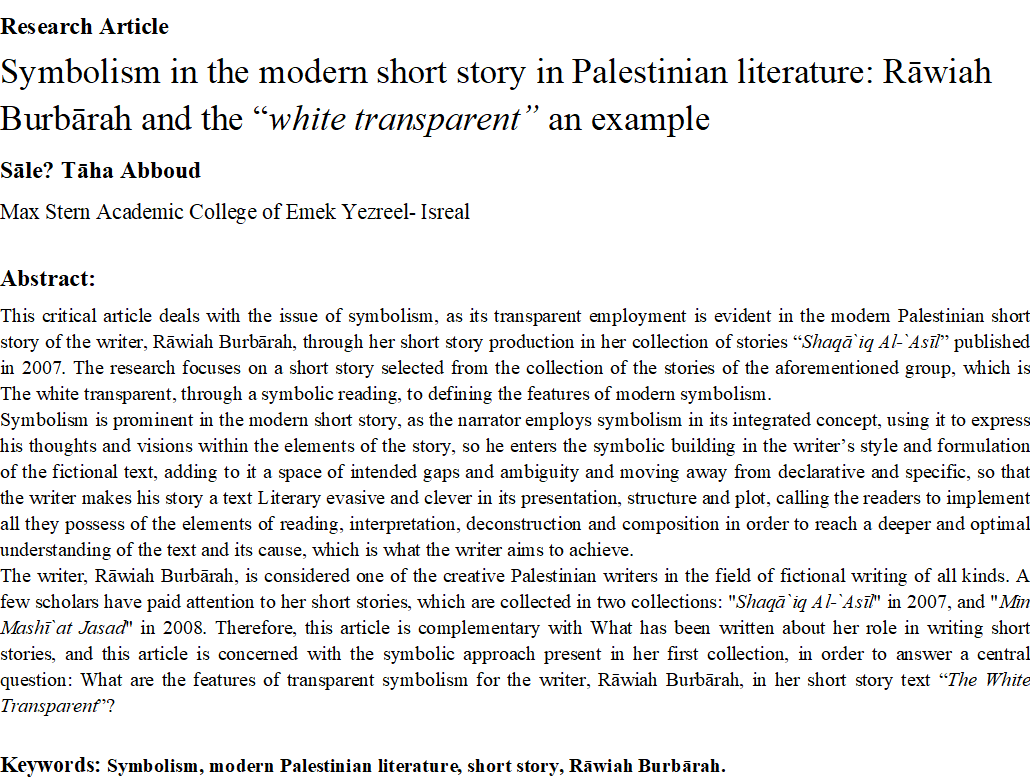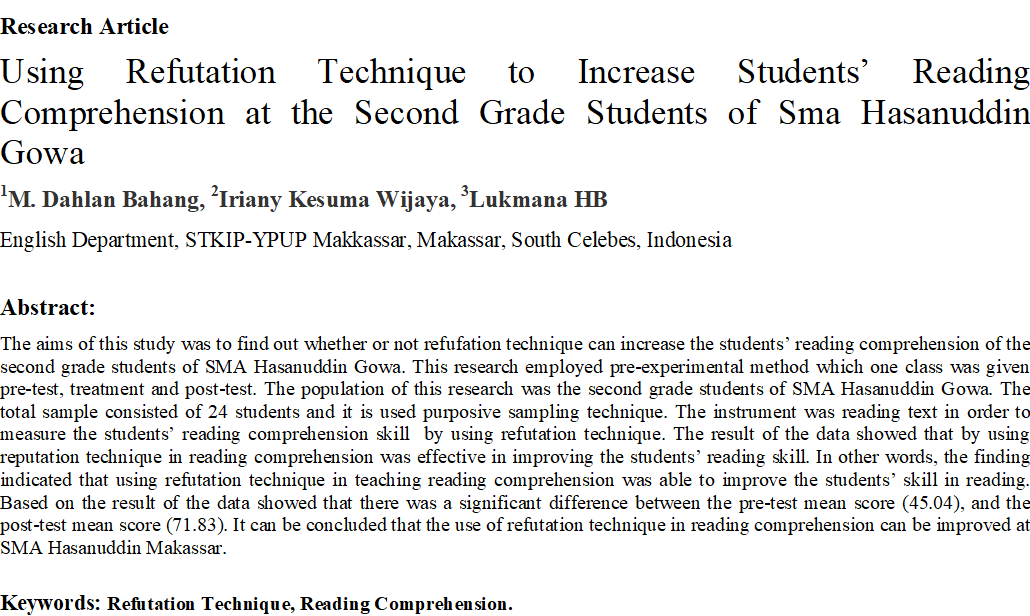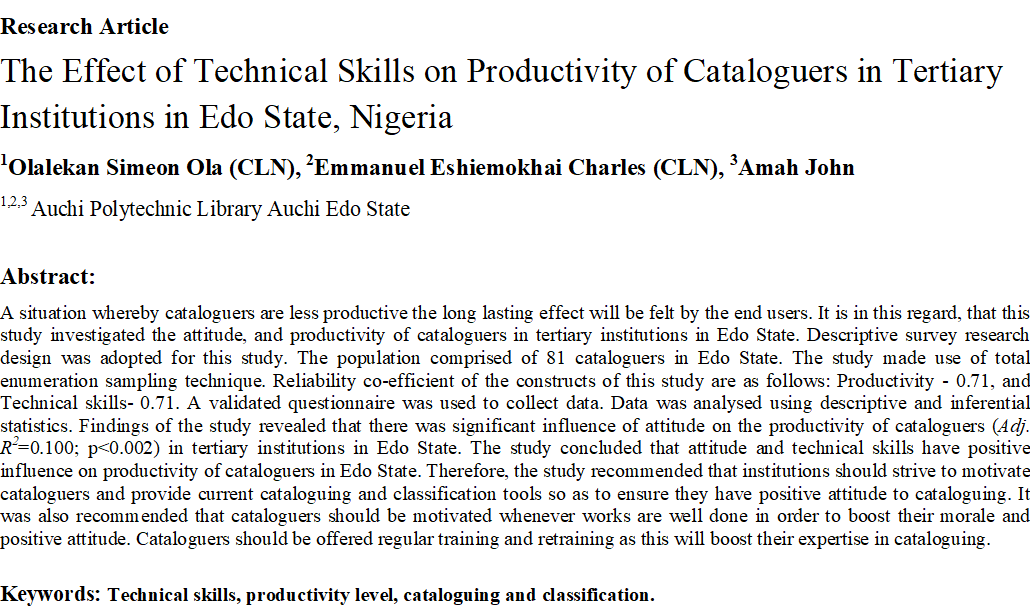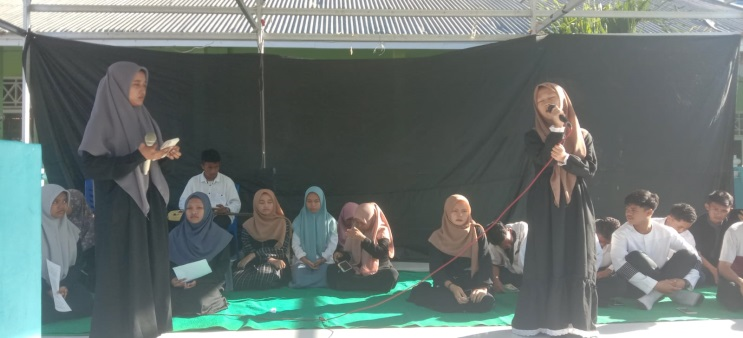Vol. 6 No. 2 (2023)
Published:
2023-02-10
Articles
-
Symbolism in the modern short story in Palestinian literature: Rāwiah Burbārah and the “white transparent” an example
01-05 225 171 -
Using Refutation Technique to Increase Students’ Reading Comprehension at the Second Grade Students of Sma Hasanuddin Gowa
06-10 241 151 -
The Effect of Technical Skills on Productivity of Cataloguers in Tertiary Institutions in Edo State, Nigeria
11-18 246 189 -







